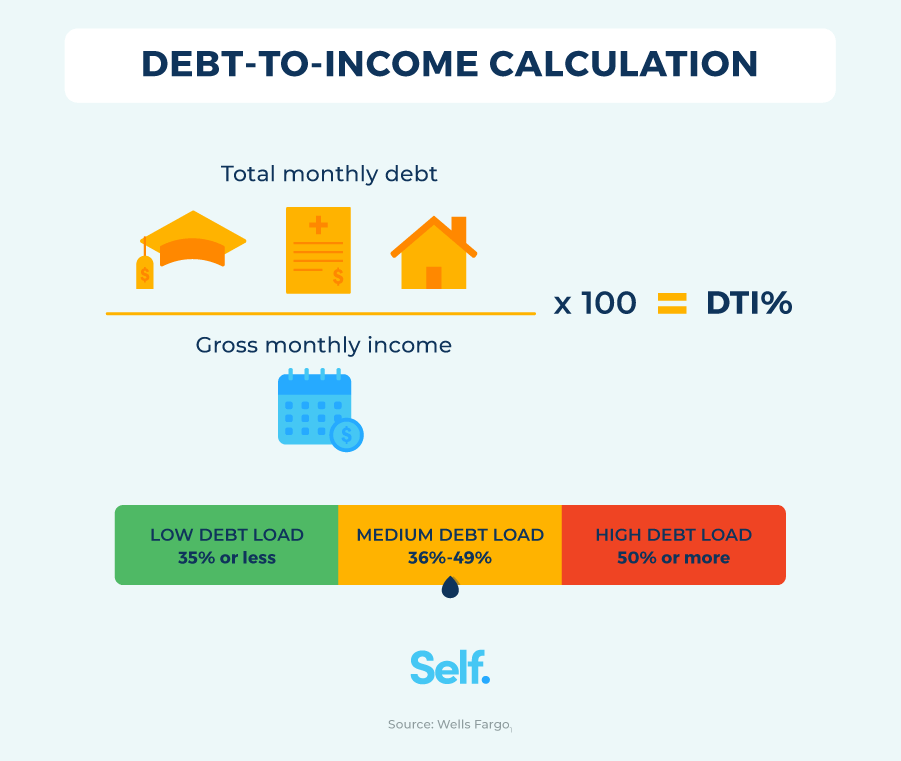Debt to income ratio for best mortgage rates – When it comes to securing a mortgage, your debt-to-income ratio (DTI) plays a pivotal role in determining the interest rates you qualify for. Understanding DTI and its impact on mortgage rates is crucial for borrowers seeking the most favorable loan terms.
In this comprehensive guide, we will delve into the concept of DTI, explore its impact on mortgage rates, and provide strategies for improving your DTI to secure the best possible mortgage rates.
Understanding Debt-to-Income Ratio (DTI): Debt To Income Ratio For Best Mortgage Rates
Debt-to-income ratio (DTI) is a crucial metric that lenders use to assess your ability to repay a mortgage. It represents the percentage of your monthly gross income that is allocated to debt payments.
DTI is calculated by dividing your total monthly debt payments by your gross monthly income. Common types of debt included in DTI calculations are credit card balances, auto loans, student loans, and rent or mortgage payments.
Impact of DTI on Mortgage Rates
DTI has a significant impact on the mortgage rates you qualify for. Lenders consider borrowers with lower DTIs to be less risky, as they have more disposable income to cover mortgage payments.
For example, a borrower with a DTI of 30% may qualify for a mortgage rate of 4%, while a borrower with a DTI of 40% may only qualify for a rate of 5%. This difference can translate into thousands of dollars in interest savings over the life of the loan.
Strategies to Improve DTI, Debt to income ratio for best mortgage rates
If your DTI is too high, there are several strategies you can use to improve it:
- Increase income:Explore opportunities for additional income, such as a part-time job, freelance work, or a promotion.
- Decrease debt:Pay down high-interest debts first, such as credit cards or personal loans. Consider debt consolidation or negotiating lower interest rates.
- Manage expenses:Reduce unnecessary expenses, such as dining out or subscriptions. Create a budget to track your spending and identify areas where you can cut back.
DTI Thresholds and Loan Options
Lenders typically have DTI thresholds that they consider acceptable for mortgage approval. For conventional loans, the maximum DTI is usually 36%. For government-backed loans, such as FHA and VA loans, the DTI limits are more flexible, with some loans allowing up to 50% DTI.
Additional Considerations
In addition to DTI, lenders also consider your credit score when evaluating your mortgage application. A higher credit score can offset a slightly higher DTI.
The size of your down payment can also impact DTI requirements. A larger down payment will reduce the amount of money you need to borrow, which can lower your DTI.
Last Point

In conclusion, managing your DTI is essential for securing the best mortgage rates and achieving your homeownership goals. By understanding the concept of DTI, implementing strategies to improve it, and considering additional factors like credit score and down payment size, you can position yourself for success in the mortgage market.
FAQ Section
What is debt-to-income ratio?
DTI is a measure of your monthly debt payments relative to your gross monthly income. It represents the percentage of your income that is allocated towards debt obligations.
How does DTI affect mortgage rates?
A higher DTI can lead to higher mortgage rates because it indicates a higher risk to lenders. Lenders view borrowers with lower DTIs as more financially stable and less likely to default on their loans.
When seeking the most favorable mortgage rates, it is crucial to maintain a healthy debt-to-income ratio. By managing your debt effectively, you can improve your creditworthiness and qualify for lower interest rates. In Kenya, securing competitive mortgage rates is essential for affordable homeownership.
Explore the best mortgage rates in Kenya to find lenders offering tailored financing solutions that align with your financial situation and debt-to-income ratio.
What are some strategies for improving DTI?
There are several strategies for improving DTI, including increasing income, decreasing debt, and managing expenses. Consider consolidating debt to reduce interest rates or negotiating lower payments with creditors.
What are the DTI thresholds and loan options available?
Industry guidelines typically set DTI thresholds for conventional loans at 36% and for government-backed loans at 43%. Various loan programs are available for borrowers with different DTI levels, including FHA loans, VA loans, and USDA loans.